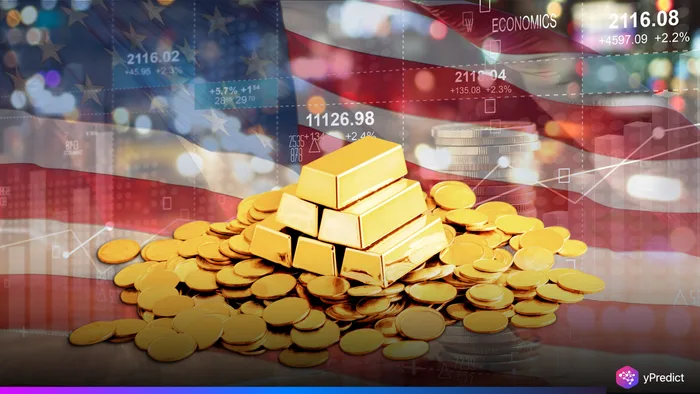
US gold futures hit a record high on Friday after a surprise report revealed new tariffs on imported 1-kg gold bars. The sudden move shook global bullion markets and pushed up trading in futures contracts. The price gap between US and global gold markets also grew wider.
The Financial Times reported that a US Customs and Border Protection letter, dated July 31, confirmed the change. The agency reclassified 1-kg and 100-ounce bars under a new customs code with higher tariffs. Although the change may take time to roll out, traders already started adjusting their price expectations in both New York and London.
Gold Futures Climb to $3,534 Amid Market Tension
The Gold futures U.S. for December delivery climbed 1.4%, to $3502.90 in Friday’s trading session. Gold futures had previously traded at an all-time high of $3534.10 prior to a quarter of the price decline. U.S. traders drove up the state of US gold due to the higher costs and change in the tariff regime.
At the same time, spot gold was modestly lower at $3396.92 an ounce, but remained at nearly 1% in weekly gains as of 0734 GMT. Analysts believe that spot’s pricing route changed slower than due to a US-based reaction in the futures market.
Why the US Tariff Shift Matters for Global Bullion
The tariffs apply specifically to 1-kg and 100-ounce gold bars, a common format used in international trade. Switzerland, the world’s largest gold refining hub, could be heavily affected.
UBS commodity analyst Giovanni Staunovo explained that the new tariff structure would significantly raise the cost of exporting gold to the US. “Even if exporters ship today, they must factor in Swiss London pricing plus new US tariffs,” he said. This cost difference has already widened the gold price surge gap between US and international markets.
Geopolitical Tensions and Trade Wars Add Fuel to the Rally
The tariff announcement comes as part of a broader set of new import duties under former President Donald Trump’s renewed trade strategy. These fresh duties target imports from major trading partners including Switzerland, Brazil, and India. As countries scramble to renegotiate or reposition their export channels, gold has become a preferred hedge amid the uncertainty.
Gold’s role as a safe haven asset strengthens during periods of financial instability. Investors traditionally turn to US futures in times of geopolitical stress or global market disruption, driving prices upward.
Rate-Cut Expectations Push Gold Demand Higher
Adding to the bullish momentum, weaker US payroll data last week increased expectations for a Federal Reserve rate cut. The CME Group’s FedWatch Tool showed a 91% probability of a 25-basis-point cut in the upcoming policy meeting.
Lower interest rates reduce the opportunity cost of holding non-yielding assets like gold. This supports further buying, especially in the futures market. Many traders see gold as a dual-benefit asset now, offering protection against both trade wars and policy shifts.
What’s Ahead for Gold Prices?
With US futures comfortably above $3,500 and spot prices slowly rising, analysts expect a lot more volatility in the coming weeks. The combination of tariffs being raised, geopolitical change, and policymakers being unclear seems to mean investor interest will remain steady/go up before the trade deal is final, whether it is positive or negative.
The current price move in gold invites speculative intrigue as traders could be betting on higher prices before the next round of tariffs takes effect. Prior to it becoming official, New York’s pricing might remain wide of London so there might be some arbitrage for willing to deal with the heightened trade risk surrounding it.
Other precious metals had mixed price action. Spot silver fell 0.3% to $38.41 an ounce. Platinum stayed steady at $1,333.88. Palladium rose 0.4% to $1,155.25 an ounce.







